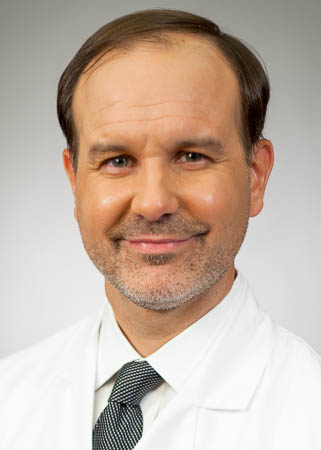Testicular Cancer
What is Testicular Cancer?
Testicular cancer is the presence of malignant tumors in one or both testes, the organ that produces male sex hormones and sperm. The testicles are located in the scrotum, a flap of skin that hangs under the penis.
Testicular Cancer Symptoms
Symptoms of testicular cancer include:
- Lumps or pain in the testicles or scrotum
- Swelling in the testicles or scrotum
- Heaviness or achiness in the scrotum
- Fluid retention in the scrotum
- Tender or enlarged breasts
- Back pain
Testicular Cancer Causes
Cancer typically develops in the germ cells, the cells that create sperm. The cause of testicular cancer is unknown, but research suggests that it may be linked to other medical conditions such as undescended testicles or Klinefelter’s Syndrome, a condition in which a male inherits an extra X chromosome.
Testicular cancer is rare and is most common in young males between the ages of 15 to 35. Patients who are related to someone who has been diagnosed with testicular cancer have a higher risk of developing the disease.
Testicular Cancer Risk Factors
Risk factors for testicular cancer include:
- Age: Testicular cancer is most common in males ages 15-35
- Race: Testicular cancer is more common in white males than in any other race
- Family history: Men who have a family history of testicular cancer are more likely to develop it than others.
- An undescended testicle: Testes generally descend to the scrotum before birth, but in some cases, testes remain in the abdomen throughout life. These men are more likely to develop testicular cancer.
- Testicle abnormalities: Some conditions, like Klinefelter syndrome, the presence of an extra X chromosome, result in malformations of the testicles and are linked to the development of testicular cancer.
Testicular Cancer Diagnosis
To diagnose testicular cancer, the physician will begin by performing a physical examination to rule out other problems. If a lump is discovered, the physician will perform an ultrasound to examine the location and composition of the lump.
The physician may also order a blood test to detect the presence of tumor markers, above average amounts of naturally occurring chemicals in the blood. If the lump is a tumor that appears cancerous, the doctor may remove all or part of the testicle for testing.
If the tests detect cancer cells, the physician will follow up with imaging tests such as x-rays, CT scans, ultrasounds, or MRI tests, to check for the presence of other tumors throughout the body.
Testicular Cancer Treatment
Treatment for testicular cancer varies according to progression. If found early, the cancer may be treated successfully with minimal risk to the patient. Small external tumors are often treated with skin cream or external beam radiation. In some cases, the tumor may be surgically removed through Mohs surgery, a procedure in which layers of abnormal tissue are progressively removed until only normal tissue remains.
If a large tumor is present, surgery may be required. Physicians begin by removing the affected testicle in a procedure called radical inguinal orchiectomy. A surgeon may also drain or remove the lymph nodes to prevent the cancer from spreading. Radiation and chemotherapy may follow. Chemotherapy may lead to infertility. Patients who undergo chemotherapy may wish to consider preserving their sperm prior to treatment.



